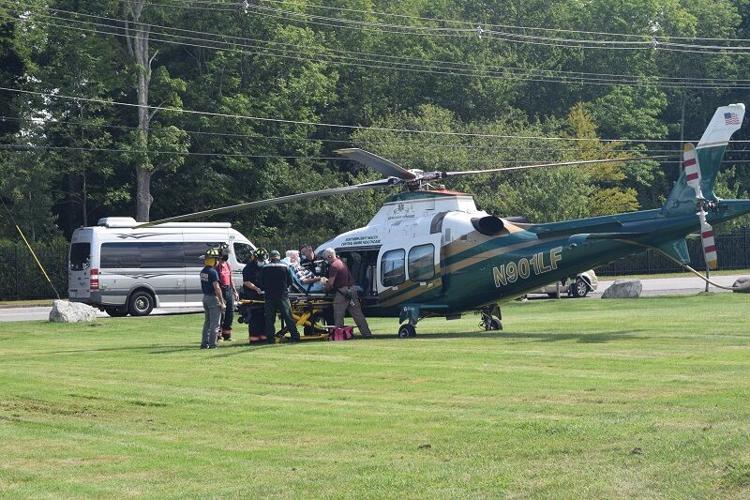By land or by air, LifeFlight adds to Maine’s first responder system (Ellsworth American)
(Ellsworth American) BAR HARBOR, Maine — Sometimes minutes matter. In fact, in critical and emergency situations minutes can be the difference between life and death.
The state of Maine encompasses more than 35,000 square miles. At 320 miles long and 210 miles wide, the sheer size and remote nature of the state, makes it a challenge to quickly reach all of its citizens and visitors.
Maine has a robust system of first responders who manage emergency situations at all levels. And among these is LifeFlight of Maine, a nonprofit emergency medical service that can, at times, defy time and space.
Working with local EMS professionals and hospital staff, LifeFlight transports more than 2,500 patients each year with helicopters, a fixed-wing airplane and dedicated ground ambulances.
At LifeFlight it is all about managing the geography of time, explained Executive Director Tom Judge. “In time-critical disease management, time and geography are important to the outcome,” he said. And for instances of stroke, heart attack and trauma faster transport can change the trajectory of the disease.
When LifeFlight receives a request to arrive at a scene, crews look at three things, said Judge. They look at the location to which they are called, the current and projected weather conditions and where the person ultimately needs to go. Sometimes they don’t yet know that last piece, especially in emergency situations, but with the information they have, they then decide which mode of transport to deploy.
Regardless of which vehicle is used, the entire fleet is equipped with state-of-the-art medical capabilities and the crew is highly trained. Containing advanced respirators, laboratory capabilities, a pharmacy and infusion pumps the vehicles can be further outfitted to address a specific need such as neonatal care.
Employing more than 110 people, LifeFlight has a team of about 60 clinicians that accompany its vehicles as needed. Its primary service consists of hospital-to-hospital transport, said Judge, which includes transport out-of-state for specialized or life-saving treatments.
Last year LifeFlight crews transported 11 patients from the Trenton airport on its fixed-wing plane, sending them to other airports mostly in the northeast. Overall, it transported 2,508 patients statewide, including 236 from Hancock County. In fact, Hancock County ranks second (after Aroostook) among Maine’s 16 counties for most transports. That, said Judge, is largely due to influx of visitors that come to the area.
For the past 23 years, the service has cared for more than 33,000 patients and while it fulfills its primary mission, it also continues to evolve and innovate. The nonprofit charity organization is currently working with the Federal Aviation Administration to create an advanced navigation route from Bangor to Bar Harbor and from Bar Harbor to Portland that is expected to serve as a pilot for similar routes that will be developed across the country. The project aims to create a flight route structure that will be akin to a major highway in the sky, said Judge.
LifeFlight’s team of clinicians also work with its EMS partners in the community to help build skills and assist with continued training. The virtual Critical Care Academy serves both LifeFlight staff and external clinicians. The goal of the program is “to help transform the practice of our critical care workforce with new skills improving care in our hospitals, for our colleague EMS agencies, and creating a pipeline of highly qualified clinical staff who are fully prepared for flight duty with LifeFlight or for appointment to hospital ICUs or emergency rooms,” according to the organization’s website.
It is all about the “chain of survival,” said Judge, and to that end LifeFlight is part of a larger system that responds to people in need. But, he said, it also relies on EMS professionals, dispatch, law enforcement, hospital staff and others in that response.
“For every minute that a critical patient is not in a hospital, their chance of doing well diminishes,” said Judge, which is why it is important for the response to be well managed and executed.

